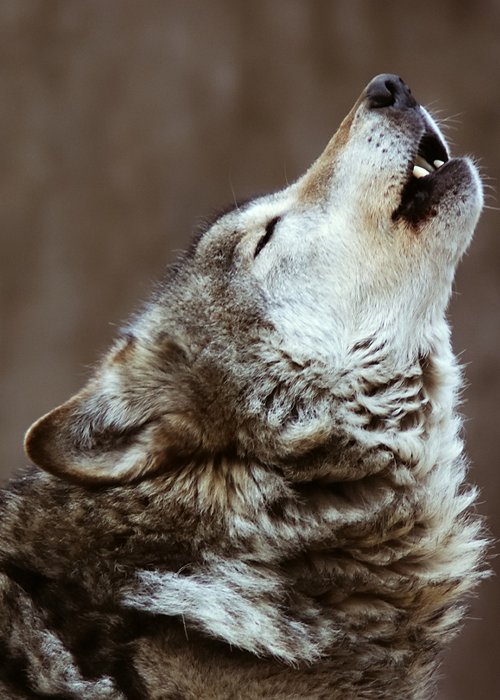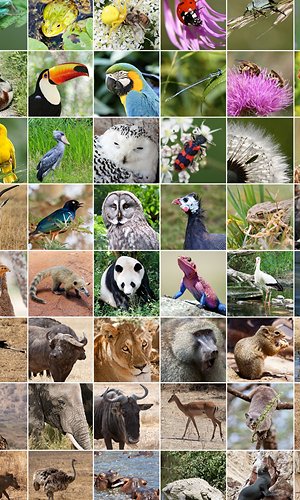Wolf identity card
The wolf (Canis lupus) is a mammal of the family Canidae and has 13 subspecies, differing in physical, genetic and behavioural characteristics. Wolves were once present in almost all parts of the northern hemisphere, but their persecution over the past centuries due to indiscriminate hunting has brought them to the brink of extinction. In recent years, thanks to many protection schemes, wolves have returned to populate many areas. They are currently found in Alaska, Greenland, Canada, Russia and Siberia. In Europe the wolf is still considered an endangered species, while in Arabia, Mexico, Iran, Afghanistan, Pakistan, India and North Africa it is considered to be critically endangered. The wolf is believed to be extinct on the islands of Honshu, Shikoku, Kyushu and Hokkaido (Japan).
Wolves in Italy
The extermination of wolves in Italy began in the early 1900s, in particular those in the Apennines. The number of wolves began to decline very quickly, until they disappeared completely from the Alps and Sicily and with only a few individuals remaining in the Apennines. Around the 1970s, approximately 100-110 wolves remained. Then, conservation policies began to be implemented, leading to an increase in numbers to about 200 within a decade and to around 400 in the 1990s.
While they are still persecuted by such practices as illegal hunting, there are currently 800 to 1000 wolves in Italy, and their range includes the entire chain of the Apennines, the Western Alps, Latium and Tuscany.
The dog's great-great-great-grandfather
The wolf is the domestic dog's ancestor and it is assumed that its domestication began around 12,000 years ago. It is thought that in the beginning, wolves followed men and their camps closely in order to feed on their waste. Later, humans realised that they could use the wolf's incredible senses to hunt and alert villages in case of danger, and so they began to breed and domesticate wolf cubs. As human civilisation evolved, the tasks of dogs have diversified and specialised, giving rise to various breeds. Dogs are still genetically wolves in their own right, sharing the same gene pool, and dogs and wolves are able to cross-breed with each other, producing fertile offspring.
Wolves in detail
Size
Wolves are slenderly and powerfully built and their size is similar to that of a German shepherd.
They weigh between 25 and 35 kg, with adult male individuals weighing up to 40-45 kg. Their length is approximately 110-115 cm and their tail measures on average 30-35 cm. Their height at their shoulders is about 50-70 cm.
Coat
The colouring of the coat also differs from individual to individual and varies in summer from beige-reddish tones to brown-grey with almost black tones in winter. A characteristic feature of the Italian population of wolves is that they have two black bands on their lower limbs. Their coat consists of two layers: a lighter-coloured undercoat and an outer layer with long guard hairs, which the wolf needs to protect itself from moisture. The two layers together ensure high thermal insulation, so that they can adapt to differing temperatures.
Paws
Wolves are digitigrades, i.e. they use their toes as their sole point of contact. Their footprints are similar to those of a large dog and for this reason it is very difficult to distinguish between the two. Their long limbs and wide paws give them great endurance, thanks to which they can cover distances of over 30 km with a constant speed of 6-10 km/h.
Skull
The skulls of these carnivores are elongated and wide. The strong muscles in their jaws help to hold down large prey, together with their 42 sharp teeth.
Sight
Of wolves' senses, sight is definitely the least acute. Wolves' vision is thought to be quite weak because they do not have a fovea centralis, a small depression behind the retina that allows perfect focus. However, they are also able to distinguish shapes and movements at great distances due to their precise peripheral vision. Night vision is significantly more accurate than day vision.
Hearing
Hearing in wolves is one of the most finely developed senses, 20 times more sensitive than that of humans. Wolves' large ears serve to better perceive sounds and, moving like radar, are able to detect the source up to10 km away.
Sense of smell
Wolves' most highly developed sense is that of smell, enabling them to locate their prey at a distance of 3-4 km. Their sense of smell is also important for communicating with other individuals in the pack; in fact, wolves mark their territory with scent marks from faeces and urine.
Anything but a lone wolf!
Wolves generally live in packs. The social structure of the pack consists of a dominant pair, called Alpha, an individual or pair called Beta (a kind of second in command), a few middle-ranking wolves and one or more low-ranking individuals, called Omega. Dominant wolves can be recognised among the pack because they hold their heads and tails high and their ears straight. The other members of the pack, on the other hand, show submissive behaviour by keeping their heads, tails and ears down and licking the muzzle of the superior individuals. Each wolf in the pack has a predetermined role: Alpha wolves lead the whole pack, Beta wolves command the middle-ranking members, all adults command the middle and low-ranking wolves. In general, the roles amongst the Alpha and Omega wolves in the pack remain fixed (except in the case of death), while they change frequently in the middle rank. Omega wolves encourage play and try to mitigate conflicts and are always the last to eat. The pack must behave in a well-organised manner, as non-cooperation of even one individual could lead to the unsuccessful hunting and going without a meal. A pack generally consists of a minimum of 3-4 wolves and a maximum of 20-30, depending on the size of their prey. If the prey to be hunted is as big as a deer, many wolves are needed; conversely, a few individuals are sufficient for small prey. Sometimes a wolf may abandon its pack and wander off alone, and in such cases, the mortality rate is very high. Only Alpha wolves have the right to mate, but when pups are born, all pack members take care of them and defend them. The pups eat first together with the Alpha wolves, all other wolves in turn follow the hierarchical scale. Young wolves continually test themselves: the strongest, fastest, most intelligent ones dominate the others and when they have reached adulthood, at around two years of age, they will hold a given hierarchical position.
Wolf habitats
The original range of the wolf during the Holocene era, starting around 10,000 years ago, included all of Europe and North America. At that time, wolves lived wherever there were wild ungulates to be hunted. As a result of competition with humans, its range has been drastically reduced. In the last century, wolves inhabited the entire Italian peninsula, except Sardinia. In the 1920s and 1940s, wolves were wiped out in the Alps and Sicily. Some 20 years later, there was another drastic reduction in their numbers.
Currently in Italy, wolves can be found throughout the Apennines, in the Western and Central Alps, in Latium and in Tuscany. About 800 individuals are recorded in the Apennines, and about 70 in the Alps.
As mentioned previously, following a drastic decrease in the number of individuals to just a few hundred, the Abruzzo Park and WWF campaign in Italy, called 'Operation San Francesco', began in 1971. In 1976, when the population had dwindled to around 100 individuals, the first wolf protection laws were enacted. In particular, in 1982 in Geneva, as a result of a European convention, the wolf was declared a 'critically endangered species'.
In recent years, the wolf population has begun to increase again, colonising new territories, and moving up along the Apennine ridge to the Piedmont Alps, even reaching France. A few years ago, the wolf was also sighted in Switzerland, Valle d'Aosta, Lombardy and Trentino. It is assumed that the Apennine wolf population will be reunited with the Slovenian wolf population in the coming years; in 2000, in fact, a number of wolves were reported in Friuli Venezia Giulia. In 1987 in Piedmont, a hunter from Breil, in the Maritime Alps, killed a wolf during a boar hunt. In the last twenty years, wolves have been found in north-western Italy, initially in the Ligurian Apennines, then recently in the French Mercantour park, then in the Maritime Alps and later in the Susa and Chisone valleys, where stable packs of wolves have been filmed.
However, the presence of wolves does bring problems for livestock breeding, although it is possible to coexist with these animals, provided that breeders take a number of precautions such as training dogs that can repel them or using electric fences to protect livestock.
Sometimes they come back
... After about 70 years of absence in the Alps, from the early 1990s, wolves are back! The wolf has never been reintroduced in Italy or in any other country in Europe. Its return, in fact, has been proven by continuous monitoring in Piedmont from 1999 to 2011 by the Piedmont Wolf Project, carried out by researchers, veterinarians and personnel from the Parks, the State Forestry Corps and the Provinces. In this way, it has been possible to record a natural recolonisation process by wolves in the western Alps. The wolf is an animal that is extremely adaptable to various ecological conditions, from Arctic zones to the arid or semi-arid zones of the Arabian Peninsula, passing through all the different ecosystems of the Northern Hemisphere, with the exception of the humid forests of South-East Asia. In Italy, factors limiting the distribution of this predator are human persecution, the availability of prey and the alteration of natural habitats. In Italy, wolves live in densely wooded mountain areas with abundant shelter, prey and, above all, with very limited humans settlement.
At the beginning of the 1990s, wolves began appearing sporadically on the Italian side of the border (Valle Pesio and Valle Susa), until the present day when it is possible to say that a wolf population has settled permanently in Piedmont.
The Apennine wolf population has increased and expanded through the Tuscan/Emilian and Ligurian/Piedmontese Apennines towards the French/Piedmontese Alps, where breeding packs of wolves have settled permanently. Currently, the wolf's distribution covers the whole Alpine region between Italy, France and Switzerland.
Wolves are there but cannot be seen
How do you become aware of the presence of wolves? It is not easy to distinguish a single wolf print from that of a medium to large-sized dog. Usually, in wolf paw prints, the plantar pads appear to be long together with the marks left by their claws and the footprint is about 8-10 cm wide, but it really depends on the type of soil or snow. In order to reliably recognise wolf footprints from those of a dog, you must follow the tracks left behind in order to interpret the animal's behaviour, but this means knowing the location and species very well. However, it is a difficult method because the wolf's stride is 80-90 cm, similar to that of a German shepherd.
The droppings, i.e. faeces, of a wolf also resemble those of a large-sized dog. They are cylindrical in shape, with a slightly tapered end and have a strong smell. Ungulate hair and bones can be found inside wolf faeces; similar remains, however, can be found in the faeces of a dog that has also fed on wild ungulates. Therefore, the only way to be really sure that we have come across a real wolf, is to carry out a genetic analysis of the faeces.





